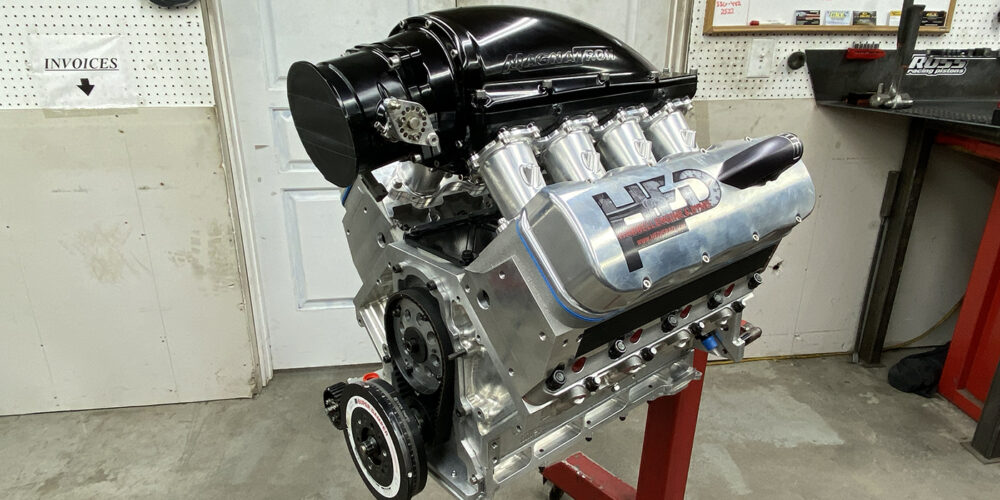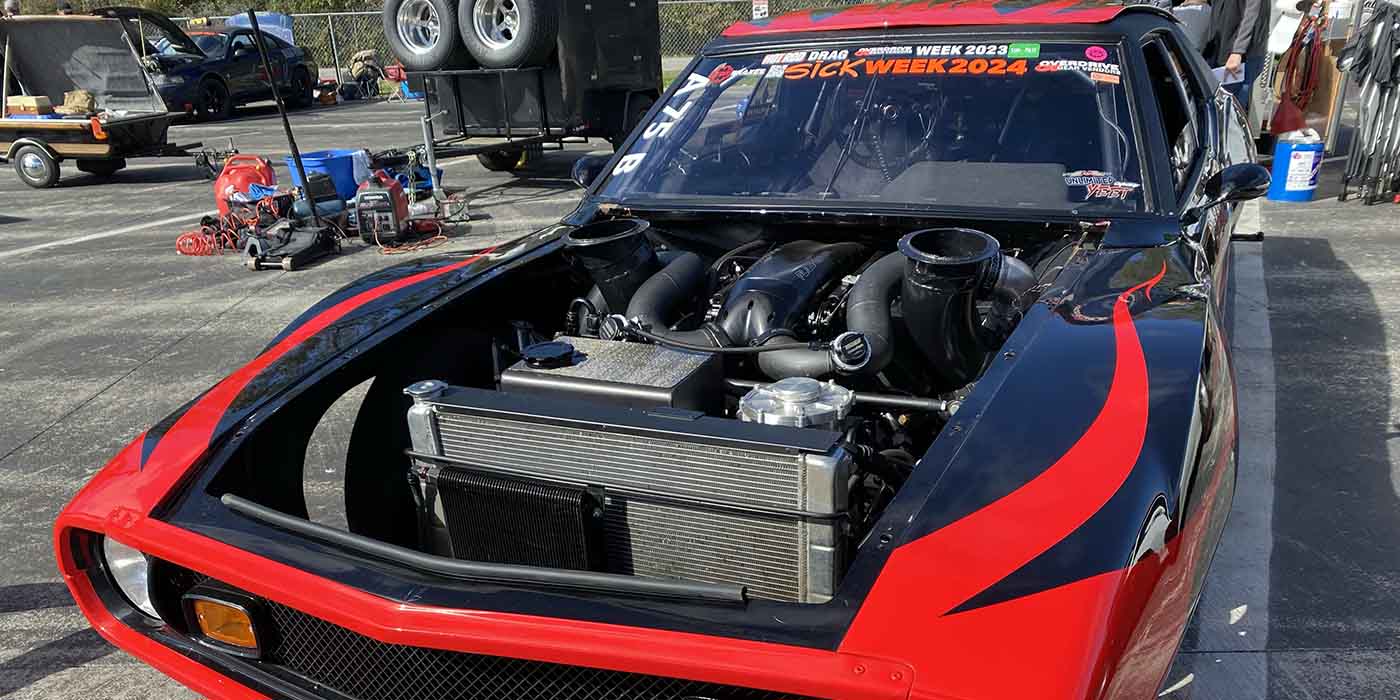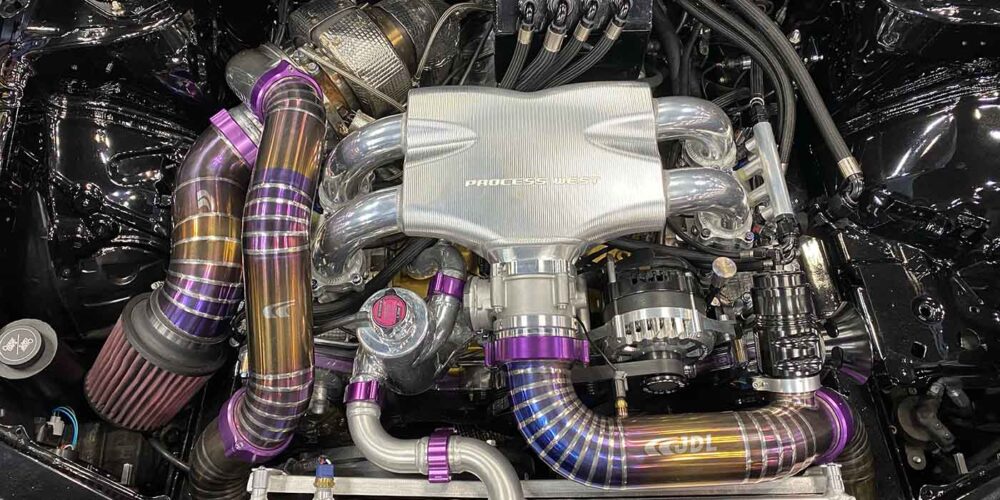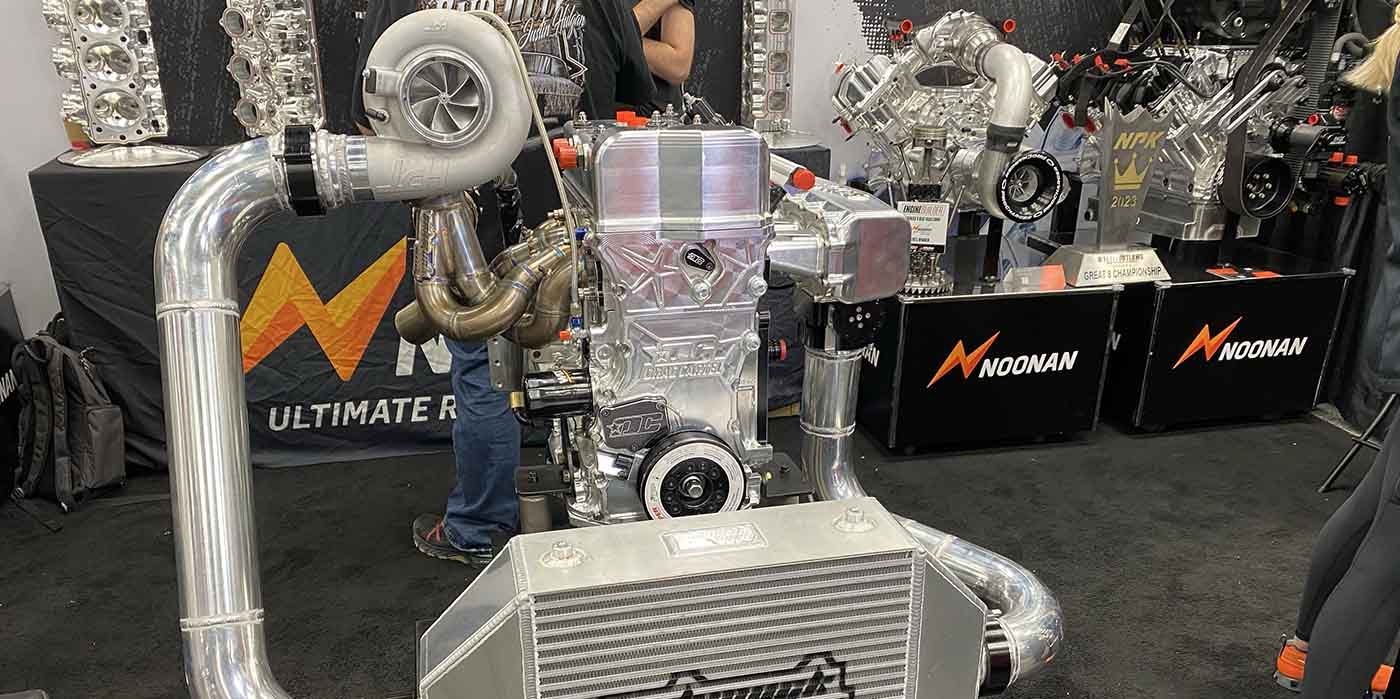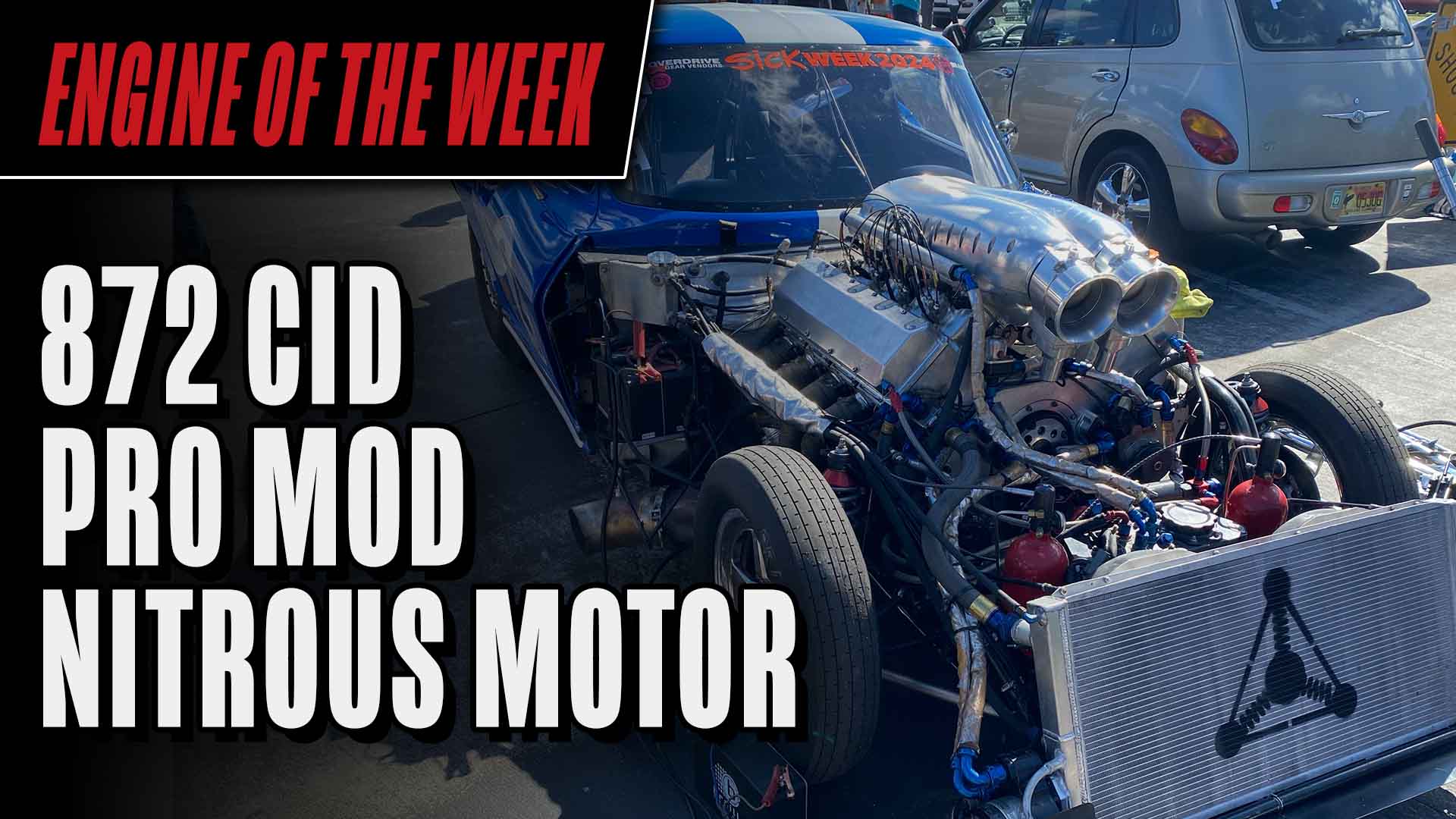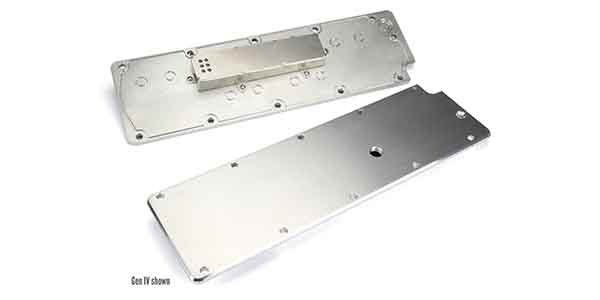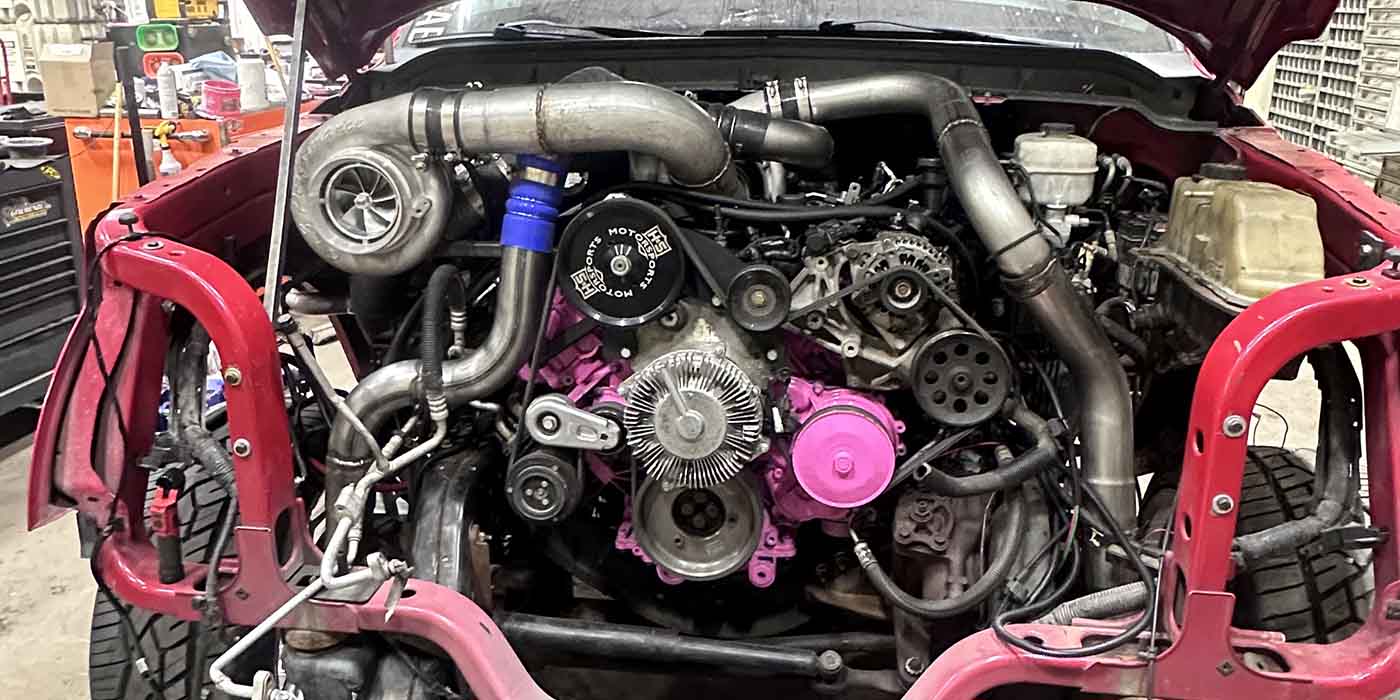Engine of the Week is presented by



We all know Pete Harrell of Harrell Engine & Dyno is real good at doin’ stuff, and that he’s always looking to do more things for Beer Money. However, there’s plenty we didn’t know about Pete and his shop, so while we were visiting the Mooresville, NC area earlier this summer, we stopped by Harrell Engine & Dyno (HED) for a tour and to talk to Pete about some of the current builds he had going on.
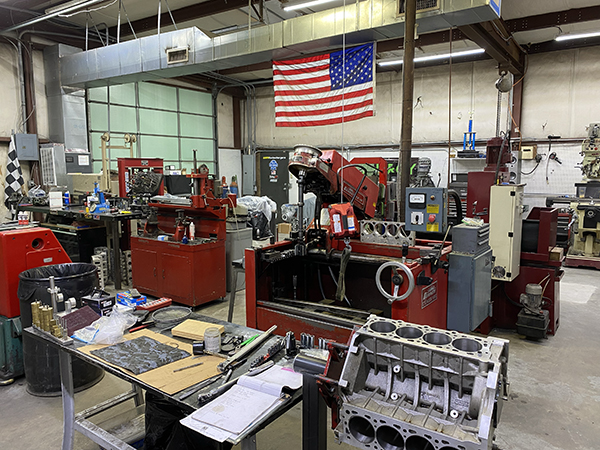
One of the engines nearing completion following a bit of a rebuild was an awesome 448 cubic inch billet LS engine for Limited Drag Radial (LDR) racing.
“If I remember correctly, this was the first single-turbo LS car to run in the 3s, which is a pretty good accomplishment,” Pete Harrell told us. “It might have also been the first small block single turbo to do that, and maybe even the first single turbo period in the 3s. It kind of crossed a few bridges all at once.”
Pete has become well-known for his engine prowess surrounding turbocharged and forced induction, high-horsepower engine builds. But, his journey to becoming the caliber of engine builder he has become, started in the Coast Guard with hot rodding.
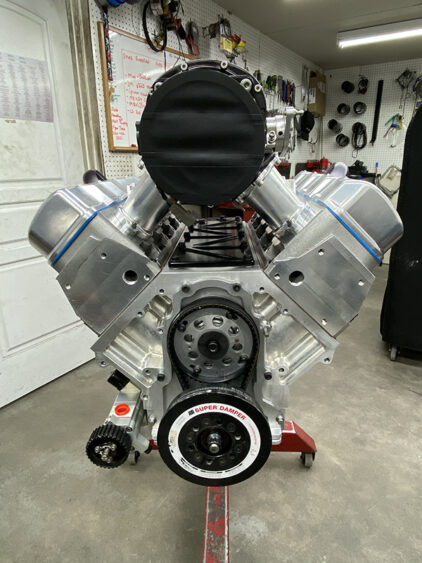
“I’m ex-Coast Guard, and I had some buddies who had fast cars and that’s kind of contagious,” Harrell says. “One thing led to another and I became interested in that stuff and started tinkering. The local machine shop where I was from was pretty sketch and I didn’t know the right way to do it, but I knew what I was getting from them wasn’t the best way. I started learning how to machine myself and that led to buying a machine and then one machine leads to another and a decade later, you’re standing in a machine shop and you don’t know how it happened.”
Most of Pete’s machining equipment he says was bought second, third, or even fourth hand. However, he’s made do with it over the years, and some of it works really great.
“I have an old Bridgeport mill that we use solely for balancing engines,” he says. “It’s got a Turner crank balancer, which I bought brand new, and it’s a great balancer. I also have a Kwik-Way boring bar that I use sometimes. We also have an RMC 10V that we use for cylinder head and block decking. We have an old valve grinder and an old German lathe. We have a Tobin Arp seat and guide machine, which is one of the first machines I ever bought. We have a Sunnen line hone, which I bought new, and it’s been a great machine that runs like a top. We also have a Sunnen rod hone and cap grinder. We have a Sunnen CK10 cylinder hone. We also have a few different solvent cleaning machines.”

Aside from the machine shop area, HED also has a parts cleaning and storage space and an engine assembly room. Just outside the shop is an inground chassis dyno where Pete tunes customer cars – anything from mild to wild.
“It has 48” rollers and puts out a real number that makes sense,” he says. “The rollers are also completely covered in rubber because the nature of the cars we work on are typically on sticky tires and have big power, so we can spray this with traction compound and we can hook just about anything.
“When it comes to tuning, I do all EFI. I don’t do any factory computer tuning. It’s all aftermarket such as Holley and FuelTech. Occasionally, we get cars in here that are more or less stock looking for a tune, but typically its turbocharged, and our chassis dyno can measure 2,500 horsepower at the wheels. This chassis dyno is super repeatable and it’s a great machine.”
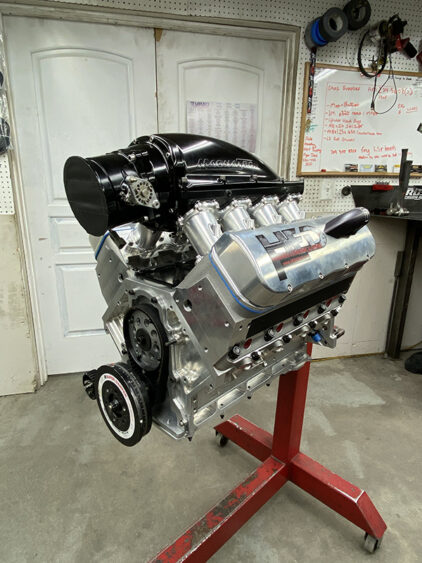
As mentioned, Harrell and his team work on a lot of turbocharged and forced induction engine combinations for anything from heavy street applications to high-horsepower racing applications.
“A lot of high-powered stuff is what we focus on,” Harrell says. “Our world is big boost turbo stuff on methanol, usually.”
And that’s exactly what this 448 cid billet LS build is. Intended for Limited Drag Radial racing, this engine has been in and out of HED a few times over the years, and was most recently in the shop for a new set of heads and a refresh.
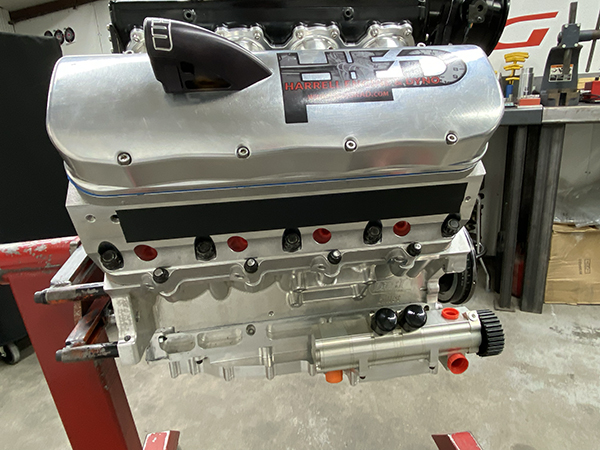
“This engine has been a work in progress for quite a while,” Harrell told us. “It previously had an older set of Edelbrock LSR heads on it and they were just worn out. The exhaust port was gigantic. What that means is there wasn’t a lot of casting left, so they were cracking through basically every exhaust port. We welded them up and patched them up for a little bit, but that got a little ridiculous. We decided to get some new castings and redid everything at the same time such as refreshing the bottom end. It’s basically the same motor, but with new, fresh cylinder head castings.”
The LS engine features a billet Dart block that is 448 cubic inches and has a rotating assembly that includes a billet Callies crankshaft, R&R billet aluminum rods and Ross pistons. The heads are a new pair of Edelbrock LSRs and the intake is a billet MagnaTron. The build features a custom HED spec’d camshaft, Manton pushrods and either T&D or Jesel valvetrain components.
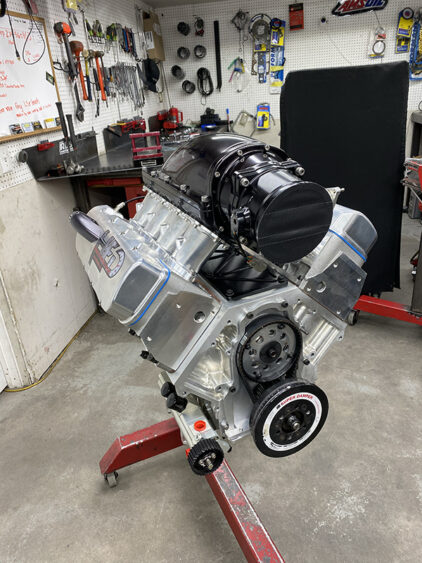
“Because we do a lot of high-powered, pressurized turbocharged and blower stuff, more often than not the valvetrain is steel,” he says. “The engine pairs to a single turbo from Forced Inductions and it runs on methanol. It’ll also have Billet Atomizer injectors, which are generally what we run on all the high-powered stuff. For oiling, we’re running a dry sump setup.”
An engine like this is capable of 2,500-3,000 horsepower, according to Pete, and so far, the customer has been running 40-lbs. of boost on the single turbo.
“We’ll turn that up here shortly, and it’ll make more,” Harrell says. “I’m not sure how much more because there is a point of diminishing returns, but it will make more than what it has. Hopefully, we will be in the 3.80s, which is where we need to be.”
This 448 cid billet LS engine is a high-powered drag race build, and we can’t wait to hear what it does next out on the track!
Engine of the Week is sponsored by PennGrade1, Elring – Das Original and NPW Companies. If you have an engine you’d like to highlight in this series, please email Engine Builder Editor Greg Jones at [email protected].

